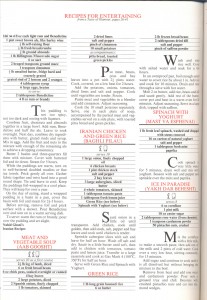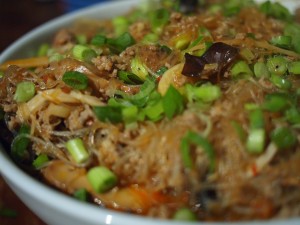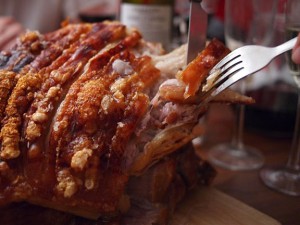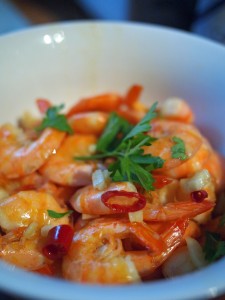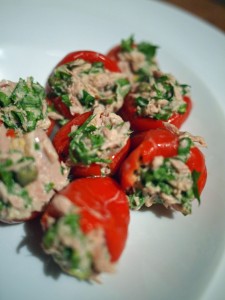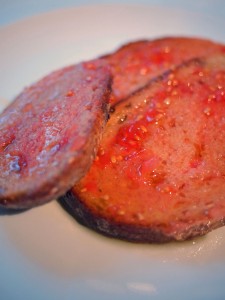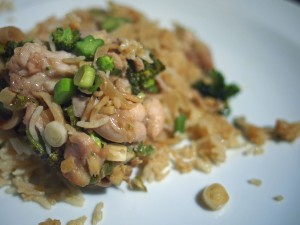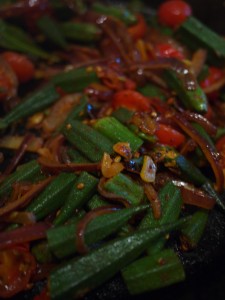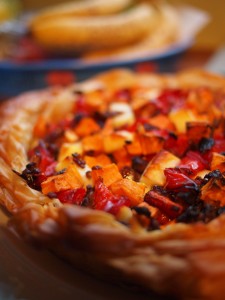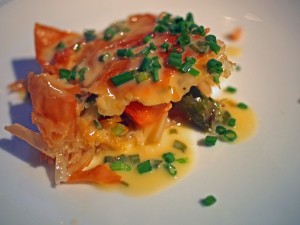The recipe I posted for sticky toffee pudding back in 2008 resulted in a comments thread full of people reminiscing about A La Carte magazine. Back when I was a horrible precocious kid, my Mum used to get the magazine monthly. It was a beautiful thing, with gorgeous photography (unusual for food publications in the 80s), and some masterful typesetting, which I used to think back to fondly when I started working in magazines myself twenty years later.
The recipes were heavily influenced by the extravagant, rich French style of dinner party cooking. Lots of butter and cream, everything spiked with as much booze as you could lay your hands on, and the sort of preparation that would have your mother sweating and swearing in the kitchen for entire afternoons as she stitched ducks and chickens together for hours at a stretch.
My Mum used to lay on the most fabulous dinner parties, where she’d cook from A La Carte and from books by those 80s superstar chefs like John Tovey, Robert Carrier and Raymond Blanc. I didn’t get to come downstairs to try the food, but I could smell it wafting up through the bannisters that overlooked the dining room, and sometimes got to sample bits in the kitchen while she cooked. I also sneaked downstairs in the mornings while Mum and Dad slept the night’s partying off to work my merry way through the leftovers, including whatever wine was left at the bottom of glasses, thereby starting early on a life of dipsomania. She’s amazing, my Mum. She used to make petit fours from scratch. She made lucullan heaps of fruit glazed with lightly beaten eggwhites and dipped in caster sugar so they shimmered as if coated in powdered diamonds. The table would be laid with silverware polished until you could kill an ant with the reflections off a spoon. And we kids would be packed away to bed after handing out the chocolate-dipped physalis, devils on horseback, freshly roasted almonds or whatever other pre-dinner nibble she’d settled on, so as not to aggravate the guests. It was enough to raise an appetite that, in my case, has not yet subsided.
Although A La Carte, with its complicated and time-consuming recipes, hasn’t survived, it turns out that a lot of those who subscribed to the magazine kept their copies to cook from. Mike Ratcliffe, a reader of this blog, very kindly sent me scans of two pages from the December 1984 edition. They include a Christmas pudding recipe you’d be well-advised to make now ready for December, a boned and stuffed turkey recipe that other commenters here have been waxing lyrical over, and a yeasted sugar tart that sounds just the ticket. (I think you can probably leave the smoked salmon ice made wobblesome with gelatine safely in the 1980s, though; and the Persian recipes on the second page lack the sort of spicing we’d be used to nowadays.) Click on the images to enlarge them to a readable size. If any other readers out there have copies of the magazine with scans they’d like to share, please send them to liz@gastronomydomine.com – I’d love to hear from you, and I know there are lots of people out there who have similarly happy memories of 1980s bacchanalia they’re just as keen as I am to reproduce.

